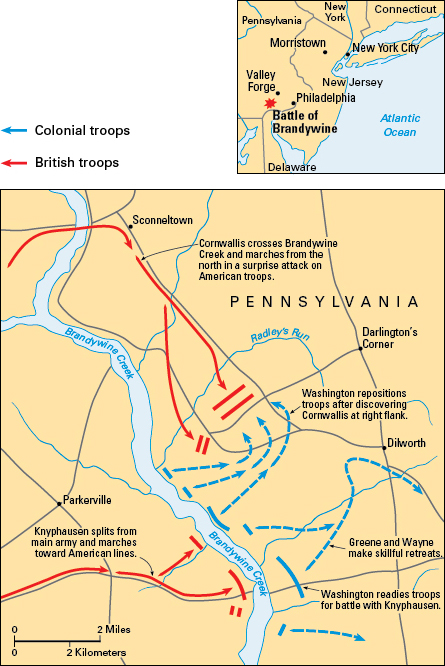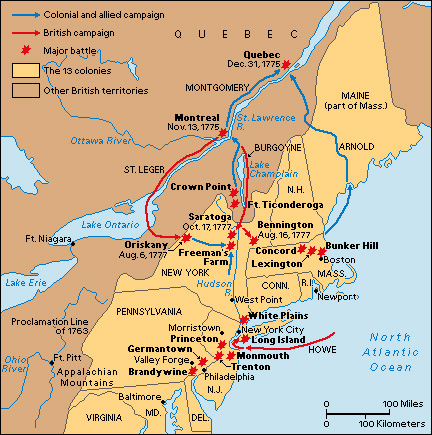
Brandywine, Battle of, was an important British victory during the American Revolution (1775-1783). The battle took place at Brandywine Creek in southeastern Pennsylvania on Sept. 11, 1777. British General William Howe led a force of British soldiers and hired German soldiers called Hessians. General George Washington led the patriot troops in his Continental Army. Howe’s victory allowed the British to occupy Philadelphia, at that time the American capital, two weeks later.

In early July 1777, Howe and more than 18,000 soldiers boarded ships at New York City. They set sail on July 23. On August 25, they landed at the northern shore of Chesapeake Bay, about 50 miles (80 kilometers) southwest of Philadelphia. Howe hoped to capture the American capital city. His army marched from northeastern Maryland into southeastern Pennsylvania. Washington’s army of about 15,000 troops was between Howe’s forces and Philadelphia. During the spring, Washington had rebuilt his army, and much-needed weapons had arrived from France.
The armies clashed on September 11 at Brandywine Creek. Howe split his army. Hessian General Wilhelm von Knyphausen and about 5,000 British, Hessian, and Loyalist soldiers marched toward the American lines as if to attack. British General Lord Charles Cornwallis and 10,000 British and Hessian soldiers crossed the Brandywine well upstream. Cornwallis’s force approached American positions from the right flank. Over the course of the battle, the Americans suffered about 1,000 casualties (killed, wounded, or captured). Skillful retreats led by Generals Nathanael Greene and Anthony Wayne helped the patriots avoid even heavier losses. The British had about 600 casualties.
Patriots fighting at Brandywine included General Henry Knox and 19-year-old James Monroe, who would later become president. Polish cavalryman Casimir Pulaski served as Washington’s aide-de-camp (field secretary) during the battle. The French soldier Marquis de Lafayette was wounded while fighting alongside the patriots.

After the Battle of Brandywine, Howe skillfully moved his troops and occupied Philadelphia on September 26. The Continental Congress fled to York, Pennsylvania, where it continued to direct American affairs.
